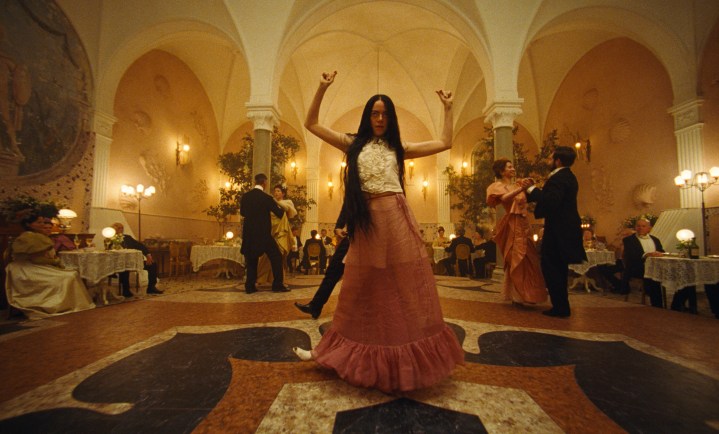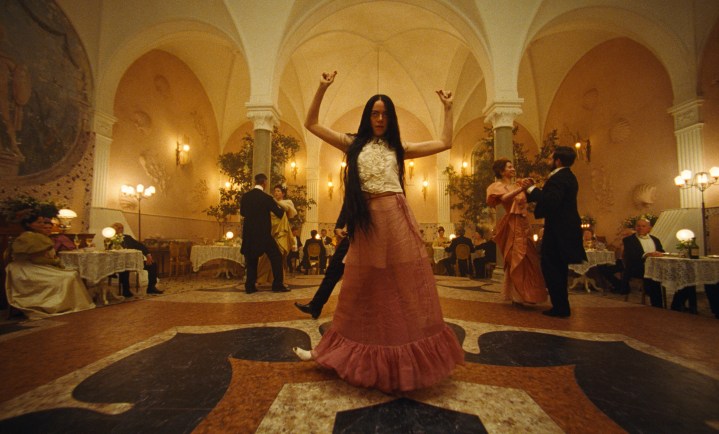
This has been a great year for movies, and sitting at the top of many “best of” lists is Poor Things, Yorgos Lanthimos’ strange mixture of steampunk science fiction, Frankensteinian horror, bawdy European sex comedy, and feminist allegory. Starring Emma Stone as the increasingly radicalized Bella Baxter, the movie is unlike any other this year, and is perhaps the most original film to come out of Hollywood in a very long time.
Part of that reason is due to Irish cinematographer Robbie Ryan, who uses all the tools in his arsenal — fish-eye lenses, VistaVision cameras — to help create Poor Things‘ fantastical places. Digital Trends talked to Ryan about the challenges in creating an imaginary world from scratch, his working relationship with Lanthimos, which Francis Ford Coppola movie served as the main source of inspiration for everyone making the picture, and which sequence was his favorite to shoot.
Digital Trends: You’ve worked with Yorgos twice so far with The Favourite and now Poor Things. Can you describe your work process with Yorgos and how you prepared for Poor Things?
Robbie Ryan: When I shot The Favourite, I really didn’t know what I was getting into with Yorgos. It was quite a learning curve, and I had to keep up with what his likes and dislikes were. The biggest difference between The Favourite and Poor Things is that from a lighting point of view, Poor Things is much more artificially lit than The Favourite, which uses more natural light.
Yorgos is quite enigmatic; you think you’re doing the right thing and then he’ll ask, ‘Why are you doing that?’” [Laughs] You quickly learn that you did the wrong thing and you have to figure out what the right thing is. Working with Yorgos is just a matter of determining what he doesn’t like and that helps you get to where you need to get to a bit quicker. But even then, I’m never too sure if it’s exactly what he wants.
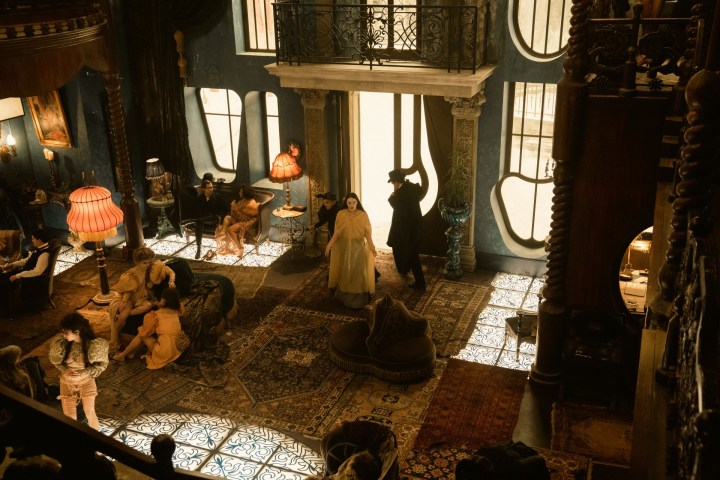
Is Yorgos one of those directors who has a solidified, preconceived notion of what he wants and relies on you to fully interpret that vision? Or does he leave space for you to put forth your own vision and creative input?
Well, on The Favourite, he would use a digital camera and show me the frame that he liked. I was like, “OK, this is not going to be so difficult. If he’s showing me what he likes on his camera, then I can assimilate that into my shots.” So that’s as close to what you would call a storyboarded shot list that we used on Poor Things.
On Poor Things, Yorgos was able to use a Viewfinder and we set up shots a little more traditionally than the last movie. Because I worked with him on The Favourite, I knew how he would like a low angle, for instance, and we could work from there.
All of the craft people, Yorgos included, had never worked on a studio-type film before, so it was kind of great that we were all a bit more free to experiment. It was a very collaborative approach between everyone. It felt like we were free to make mistakes.
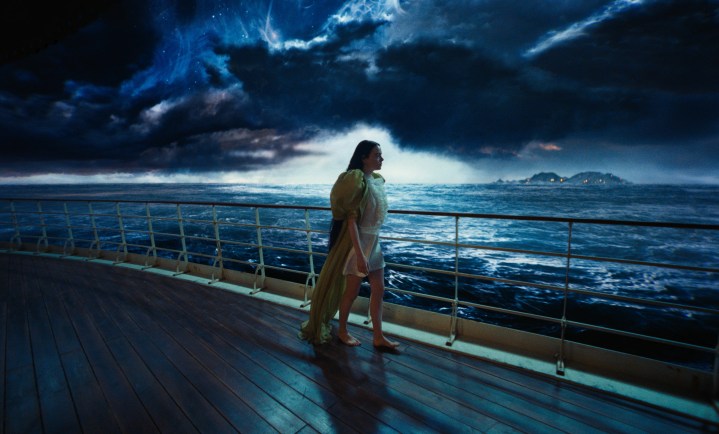
Poor Things is a period movie with elements of the fantastic. Were you influenced by either the book or other similar movies like The Bride of Frankenstein or Brazil when composing your shots?
Brazil wasn’t necessarily talked about much in preparing for or shooting the film. Yorgos had a long list of films he was talking to everybody about as primary influences, but the one that we referred to more than most was Bram Stoker’s Dracula, the Francis Ford Coppola film from 1992.
Oh, yeah.
So when we were a bit unsure how to proceed with certain things, we’d tap into what had been done in Bram Stoker’s Dracula. It was very helpful because in seeing that movie, we saw what those artists were able to get away with in terms of cinematography, production design, costumes, directing, you name it. In a way, the more mad that movie was, the more it kind of worked. We watched other films as well, but I wouldn’t say we wore those references on the heart or sleeve of the film. They were there more to inspire than anything else.
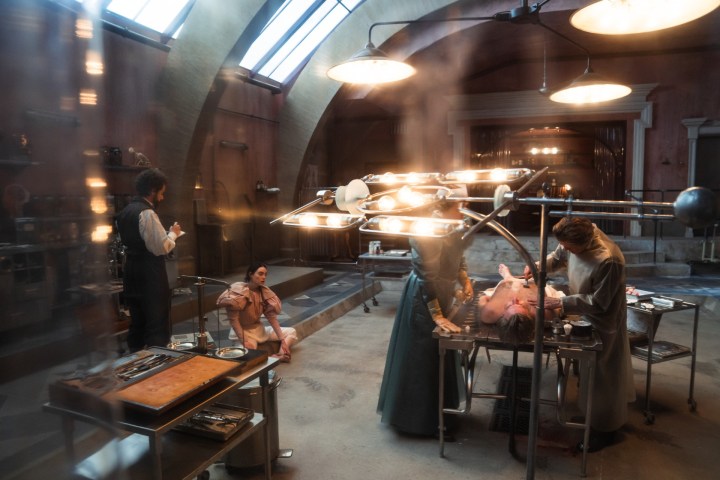
Sure. Do you have a favorite shot or sequence in Poor Things that stands out to you?
One of my favorite scenes is the reanimation sequence at the beginning of the film because I just really loved the fact that we shot it on VistaVision. The VistaVision cameras are very noisy and Yorgos doesn’t like to do ADR [Automated Dialogue Replacement], so he only used them for that sequence. It’s the one scene where I think everything in the film starts going full volume with the music, the visuals, and the story, To me, it makes the audience think, “Oh, it’s going to be that kind of film.” Yeah, I’m very fond of that scene.
And what was the most challenging shot to pull off?
There was an awful lot of key lighting that had to be done, so my biggest challenges were really in that area. The scenes in Portugal in particular were difficult because they were kind of quite expansive. No matter how much light you threw out, it still needed more light. It was kind of like beating my head against the wall a bit for those shots.
This last question isn’t about Poor Things, but about something completely different. I dug up a recent interview you did with The Irish Times where you revealed that you had never seen Succession. Has that changed?
[Laughs] No, I never have and I never will. I haven’t seen The Sopranos. I haven’t seen Breaking Bad. I don’t watch the telly. I only watch comedy on television. I did watch Twin Peaks: The Return, but that’s about it. I don’t have that much time to watch it. I’ve got too many films I want to watch, so I don’t really have time for anything else.
Poor Things is now showing in select theaters now. It expands nationwide on December 22.
Editors’ Recommendations
Services Marketplace – Listings, Bookings & Reviews
